 Abraham Lincoln
If given the truth, the people can be depended upon to meet any national crisis...
Abraham Lincoln
If given the truth, the people can be depended upon to meet any national crisis...
 Guildford news...
for Guildford people, brought to you by Guildford reporters - Guildford's own news service
Guildford news...
for Guildford people, brought to you by Guildford reporters - Guildford's own news service
Do These Then And Now Views Of Shepherds Hill, Stoughton, Match Up?
Published on: 27 Mar, 2013
Updated on: 27 Mar, 2013
By David Rose
The photo showing the building of Shepherds Hill in Stoughton, that was the subject of this online newspaper’s Where Is This? No.48 feature, resulted in a good deal of replies. But there is still a question over the exact location as to where the photographer was standing.
Click here to see that post and all the replies at the foot of it.
The photo is one of a group of tiny images that show the building of Shepherds Hill, which I was lucky enough to add to my collection recently. They are very rare indeed and it’s lucky they have survived.
To continue the debate and to hopefully resolve the mystery, here are the complete set of old photos alongside some photos I took this week (March 25) of which I reckon are as near as possible to where the originals were taken. (It was freezing cold when I standing there trying to match up the images!)
I am hoping you the experts out there may be able to confirm the locations or suggest otherwise.
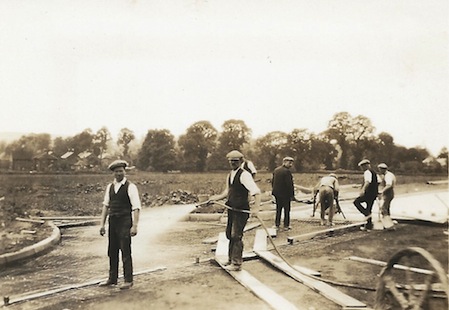
Then: Here we see some of the builders… with Stoughton Recreation Ground and the houses in Aldershot Road in the distance.
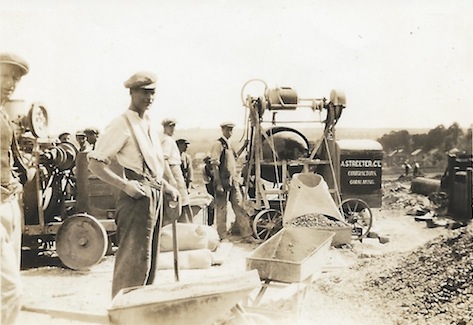
Then: And finally another picture of the workmen. I believe this is about the same position as the previous pair of photos.
After the First World War there was, in Guildford, as in many towns in Britain, a shortage of housing. Guildford Borough Council’s housing committee soon made plans to provide 500 homes for the working classes.
By December 1918 eight acres of land at Stoughton had been bought for £1,750 for council houses. The Shepherds Hill estate was designed by Guildford architect Edward Lunn and the houses were built by W. G. Tarrant Sons & Co of Byfleet. This same firm also built many fine houses in and around Weybridge including the exclusive St George’s Hill estate.
Under the scheme in Stoughton, 85 ‘cottages’ of 11 different designs would provide the following: four cottages with four bedrooms and a parlour, 50 cottages with three bedrooms and a parlour, and 31 cottages with three bedrooms without a parlour.
The building programme was not completed without some labour disputes. In August 1919 the workmen went on strike, demanding more pay for bricklayers and labourers. They got their way and received an average of three pence (old money) extra per hour in their wage packets. In total, there were about 200 men at work on the site.
On Sunday, December 6, 1919, the first of the homes were ready for occupation. Rent for the four-bed homes was 17s 6d per week, the three-bed with parlour 15s per week and the three-bed without parlour 12s 6d per week.
Looking at the old photos, they appear to have been taken during the summer time – perhaps about the time the men went on strike, although it was only for half a day!
My thanks go to Brian Holt for making a copy of an article by Mavis Swenarton of the Walton and Weybridge History Society. She wrote a paper titled Guildford’s ‘Homes Fit For Heroes’ all about the Stoughton Housing Scheme. I think it may have been published by the Surrey Archeological Society.
If you have anything to add, please leave a reply in the box below.
Responses to Do These Then And Now Views Of Shepherds Hill, Stoughton, Match Up?
Leave a Comment Cancel replyPlease see our comments policy. All comments are moderated and may take time to appear.

"Found any?" - "Nope, it all looks green to me!" (See Opinion: The Future is Congested, the Future is Grey)
www.abbotshospital.org/news/">





Recent Articles
- Latest Evidence in Sara Sharif Trial
- Ash’s New Road Bridge Is Named – and November 23rd Is Opening Day
- Class A in Underwear Leads to Jail Sentence
- Historical Almshouse Charity Celebrates Guildford in Bloom Victory
- Notice: Shalford Renewable Showcase – November 16
- Firework Fiesta: Guildford Lions Club Announces Extra Attractions
- Come and Meet the Flower Fairies at Watts Gallery
- Updated: Royal Mail Public Counter in Woodbridge Meadows to Close, Says Staff Member
- Letter: New Developments Should Benefit Local People
- Open Letter to Jeremy Hunt, MP: Ash’s Healthcare Concerns


Recent Comments
- Paul Spooner on Ash’s New Road Bridge Is Named – and November 23rd Is Opening Day
- Harry Eve on Opinion: The Future is Congested, the Future is Grey
- Nigel Keane on Letter: New Developments Should Benefit Local People
- Nathan Cassidy on Updated: Royal Mail Public Counter in Woodbridge Meadows to Close, Says Staff Member
- T Saunders on Opinion: The Future is Congested, the Future is Grey
- Jim Allen on Updated: Royal Mail Public Counter in Woodbridge Meadows to Close, Says Staff Member
Search in Site
Media Gallery
Dragon Interview: Local Artist Leaves Her Mark At One of England’s Most Historic Buildings
January 21, 2023 / No Comment / Read MoreDragon Interview: Lib Dem Planning Chair: ‘Current Policy Doesn’t Work for Local People’
January 19, 2023 / No Comment / Read MoreA3 Tunnel in Guildford ‘Necessary’ for New Homes, Says Guildford’s MP
January 10, 2023 / No Comment / Read More‘Madness’ for London Road Scheme to Go Ahead Against ‘Huge Opposition’, Says SCC Leader
January 6, 2023 / No Comment / Read MoreCouncillor’s Son Starts Campaign for More Consultation on North Street Plan
December 30, 2022 / No Comment / Read MoreCounty Council Climbs Down Over London Road Works – Further ‘Engagement’ Period Announced
December 14, 2022 / No Comment / Read MoreDragon Interview: GBC Reaction to the Government’s Expected Decision to Relax Housing Targets
December 7, 2022 / No Comment / Read MoreHow Can Our Town Centre Businesses Recover? Watch the Shop Front Debate
May 18, 2020 / No Comment / Read More



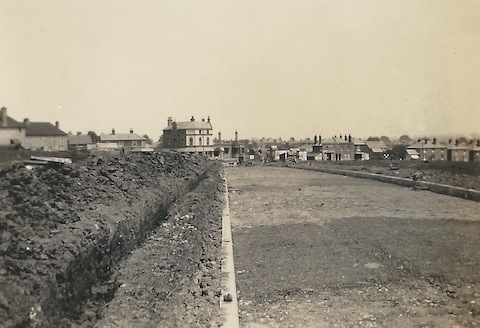

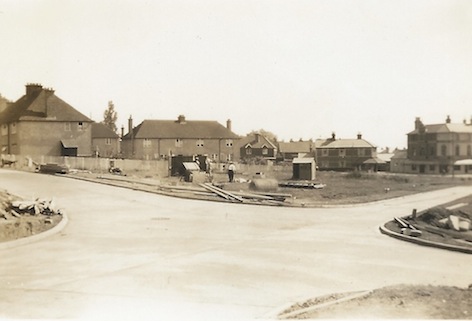
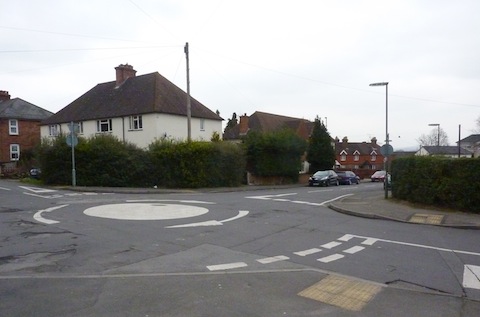

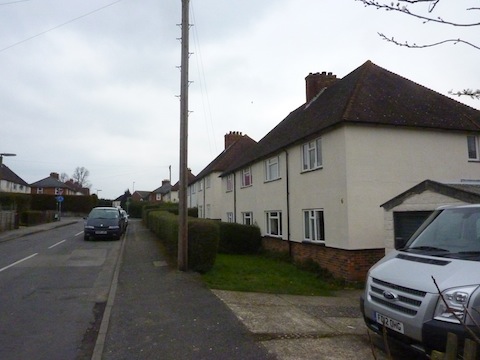
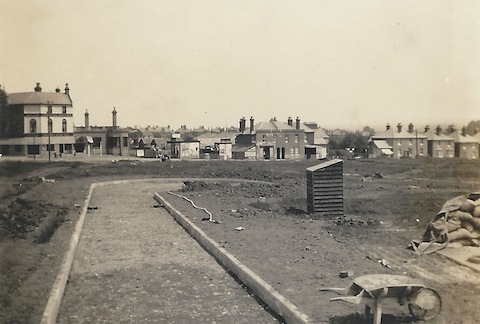
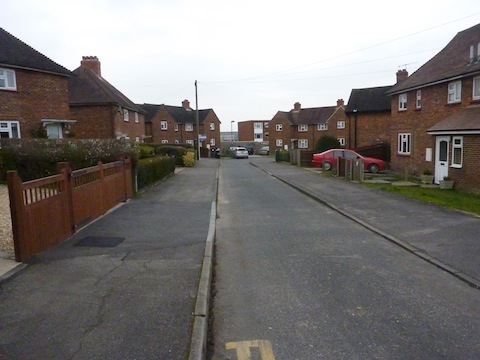
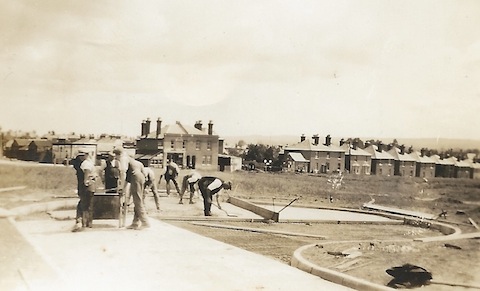








Brian Holt
March 29, 2013 at 6:17 pm
I have been studying the photo’s, which I have enjoyed looking at, but I am now confused as photos 1 and 7 seem to be exactly the same yet the road is different width.
The picture looking down to the pan you can just see the lower end of the Royal Hotel, but the next picture of seven men building the the pan road there is no Royal Hotel in the picture, only the shop.
When the recent photo was taken in Shepherds Hill, I think if you just slightly turn to the right and taken the photo it would be spot on.
Yes they do match up.
chris carroll
February 7, 2014 at 3:25 pm
I live at 5 Shepherds Hill and the photos all seem to be correct. You even have my house being built and todays veiw. My blue Renault Espace is parked outside. Keep doing what you do it’s great reading.
Suzanne Lemon
April 2, 2015 at 5:07 pm
I lived at 48 Shepherds Hill as a child, next door to the Stevens.
We then moved across the road to 51, next to Mark Bartlett who was the local milkman (and my first boyfriend).
The place doesn’t seem to change much…
Peter MacDonald
December 2, 2019 at 2:39 pm
I have a past family connection linked to the Stoughton area, living at a Shepherd’s Lodge c1900.
It would seem this might be the location, would anyone be able to confirm this?
David Rose, who wrote the original story, replies…..
No. The road names on this council house estate when built were Shepherds Hill and Fentum Road and the houses were numbered. The latter road is named after a Guildford councillor and mayor H. Fentum Phillips.
Additional development in latter years there has included Scott Close, Galvins Close, Briery Close and Emmanuel Close – all numbered.
Checking various copies of Kelly’s Directories for Guildford, a house named Shepherd’s Loge is recorded in the 1939 edition in nearby Shepherd’s Lane. At that time the majority of the houses in that road are only listed by name, not by number.
Numbers of the houses there were introduced over the following 30-odd years, and so today Shepherd’s Lodge is 62 Shepherd’s Lane.
Checking past six-inch to the mile Ordinance Survey maps (available on line via the National Library of Scotland) of the area, confirms what I know from local knowledge that the houses in Shepherd’s Lane were built in the early 1930s.
The 1934 revised map shows the houses, while on the 1913 revised map there are none of these houses, but Shepherd’s Farm was. Hence from which the road name originates.
If Peter is correct in that his relatives lived in a Shepherd’s Lodge somewhere in Stoughton in around 1900, it may have been a completely different one to the above, and not one I can find a trace of.
If Peter has census details, (ie the 1901 census, for example) it will be worth checking the whole page that includes ‘Shepherd’s Lodge’ as names of neighbouring properties compiled by the census enumerator may give some clues as to where it might have been, and possibly in relation to other roads close by.